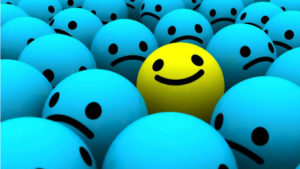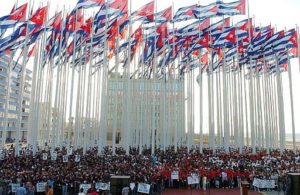Somos+, Roberto Camba, 21 March 2017 — The United Nations has just launched the 2017 World Happiness Report, coinciding with the World Happiness Day on March 20th. From its first publication in 2012, the world has come to understand more and more that happiness has to be used as the correct measure with regards to social progress and the objective of public policies.
The report is based on statistics collected from the happiness index or subjective well-being, Gross Domestic Product, social support, life expectancy from birth, freedom to make decisions, generosity, perception of corruption (within the government or in businesses), positive or negative feelings, confidence in the national government and in society, the level of democracy and the level of income per household. continue reading
Much of the data is taken from the average of the results of Gallup’s global survey. For example, the “life’s staircase” question: “imagine a staircase, with steps numbered from 0 (at the base) to 10 (at the top). The top of the stairs represents the best life possible for you and the base the worst life possible. Which step do you feel like you are currently at right now?”
“Social support” means having someone that you can rely on during times of difficulty. Generosity equates to having donated money to a charitable organisation over the past month. Whereas, positive or negative feeling relates to questions about whether for the most part of the previous day the individual experienced happiness, laughter or pleasure; or rather did they experience negative feelings such as worry, sadness or anger. The report references its sources and explains the other indexes which negatively influence the perception of happiness such as: unemployment or social inequality.
The 2017 Happiness Report places Norway at the top of its list, followed by: Denmark, Iceland, Switzerland, Finland, the Netherlands, Canada, New Zealand, Australia, and Sweden as the top ten.
The US was listed at number 14 and Spain at 34. The best placed Latin American nations were Chile (20), Brazil (22), Argentina (24), Mexico (25), Uruguay (28), Guatemala (29) and Panama (30). The list included 155 countries. Those that have improved the most with regards to their position between 2005-2007 are Nicaragua, Lithuania and Sierra Leone, whilst Venezuela is the country that has slipped down the rankings the most.
And Cuba? It does not appear on the list. The Network of Solutions for Sustainable Development that prepared the report only possesses data on Cuba from 2006. During that time, the average response to the “staircase of life” was 5.4 (which placed it at 69th out of 156 nations), just behind Kosovo. Possibly today many Cubans would answer “where is the staircase to even begin to climb it?”
According to the 2006 data, Cuba appeared to be high in its ranking of social support and life expectancy from birth, but it was the third worst in freedom to make decisions. It was ranked as low for level of democracy, despite the fact that its per capita GDP surpassed China, Mexico, Brazil and South Africa to name some of the prosperous economies in the world*. In the net index of feelings (the average of positive feelings subtracted by the average of negative feelings) Cuba occupied the 112th place, making it the lowest ranked country in Latin America, with only Haiti having worse figures.
This index is the most direct measurement of fulfillment or of personal frustration that influences values and behaviour.
Of course beyond scientific rigour, no statistic or survey is 100% reliable. Subjective happiness or individual perception of happiness is very variable. Replying to these questions implies making a mental comparison. We compare ourselves to our neighbour, to those abroad, to our past or to our previous situation.
who receive manipulated information will not be able to effectively compare themselves. Furthermore, people think as they live: having access to running water could be the ultimate happiness for someone living in Sub-Saharan Africa, but a European or North American considers that they must have that and would take offense if they did not have it.
Cubans do not need a global report to know that there is a low happiness index among the people. The problems seem insoluble, the shortages are growing, personal ambitions have had to be postponed for decades, emigration becomes the only hope. The government quashes individual initiatives and working towards the happiness of its people — or allowing others to do it — does not seem to be in its projections. At Somos Más (We Are More) we believe that a responsible government must have this as its main objective and we will continue to fight to achieve it.
Translator’s note: If the GDP used for this analysis was that provided by the Cuban government, it would likely have been inaccurate.



